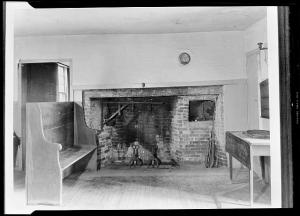
An Irish immigrant passes along the plastered stone walls and tiny windows of her New York employer’s basement kitchen and ascends the stairs. One flight takes her to the family’s main living spaces and another to the halls outside their bedrooms before she opens the door to the winding, steep and narrow set of tower stairs that offer the only access to the attic, and the three adjoining servants’ rooms there. A row of pegs on the plaster walls suggest that no chests of drawers sit on the room’s pine floors, but her modest wardrobe would scarcely require one. She reaches toward a shelf mounted high on the wall and lights a candle, the only flame in this hearthless room. Soot drifts across the whitewash.
Today, domestic servants like this woman often languish in what curator Patricia West has called “documentary obscurity.”[1] The Irish women who once labored in and around Lindenwald–the Kinderhook, New York, home of retired U.S. President Martin Van Buren [1782-1862]–rarely appear in the archival record apart from the occasional passing reference in family correspondence, census records and other fragmentary mentions. The carbon shadow still visible on the wall today is among the few physical traces that remain of these women’s lives on Van Buren’s estate. Continue reading “Learning to Look: Built Environments as Sources of Insight on Women’s Work”
